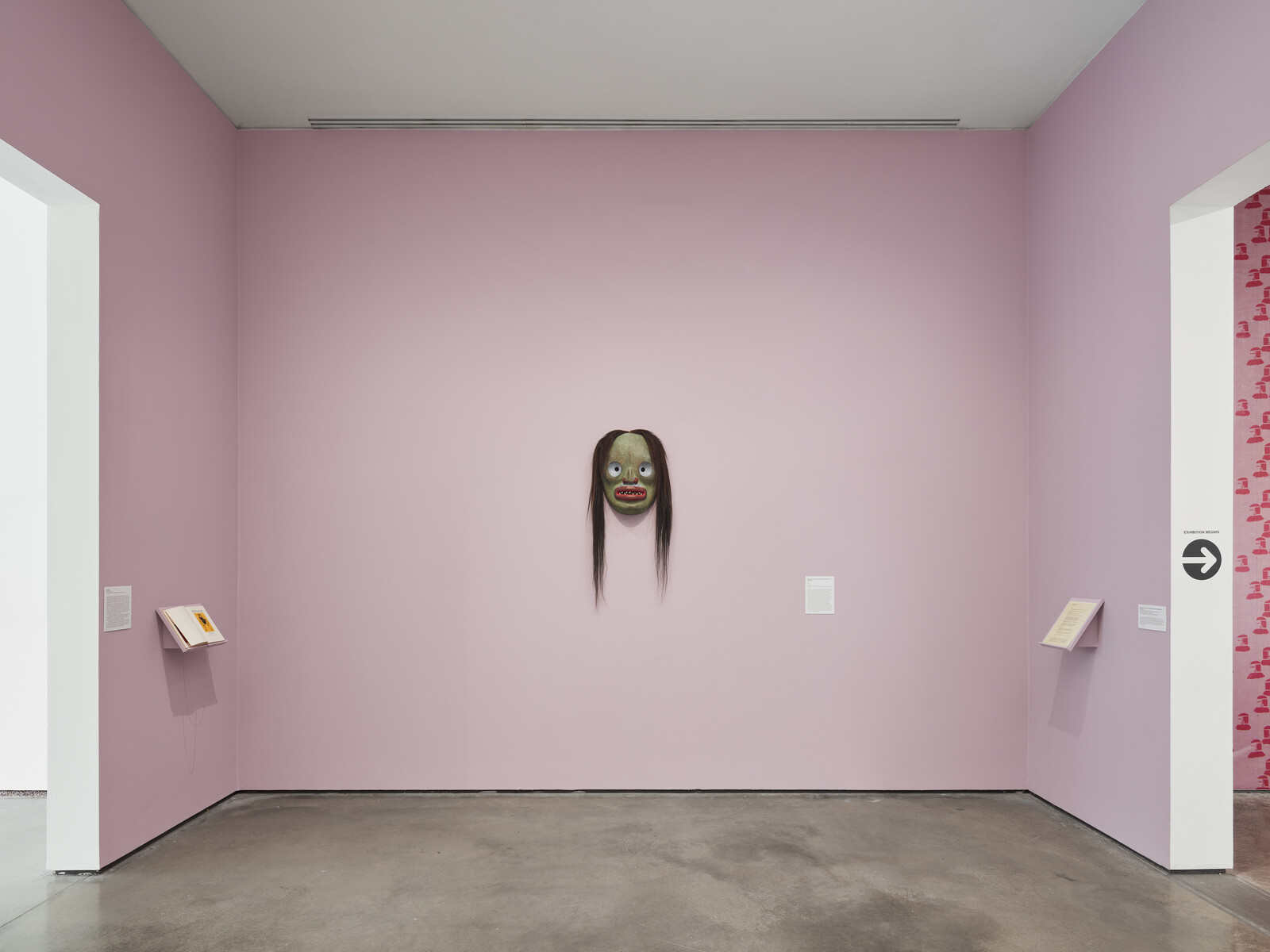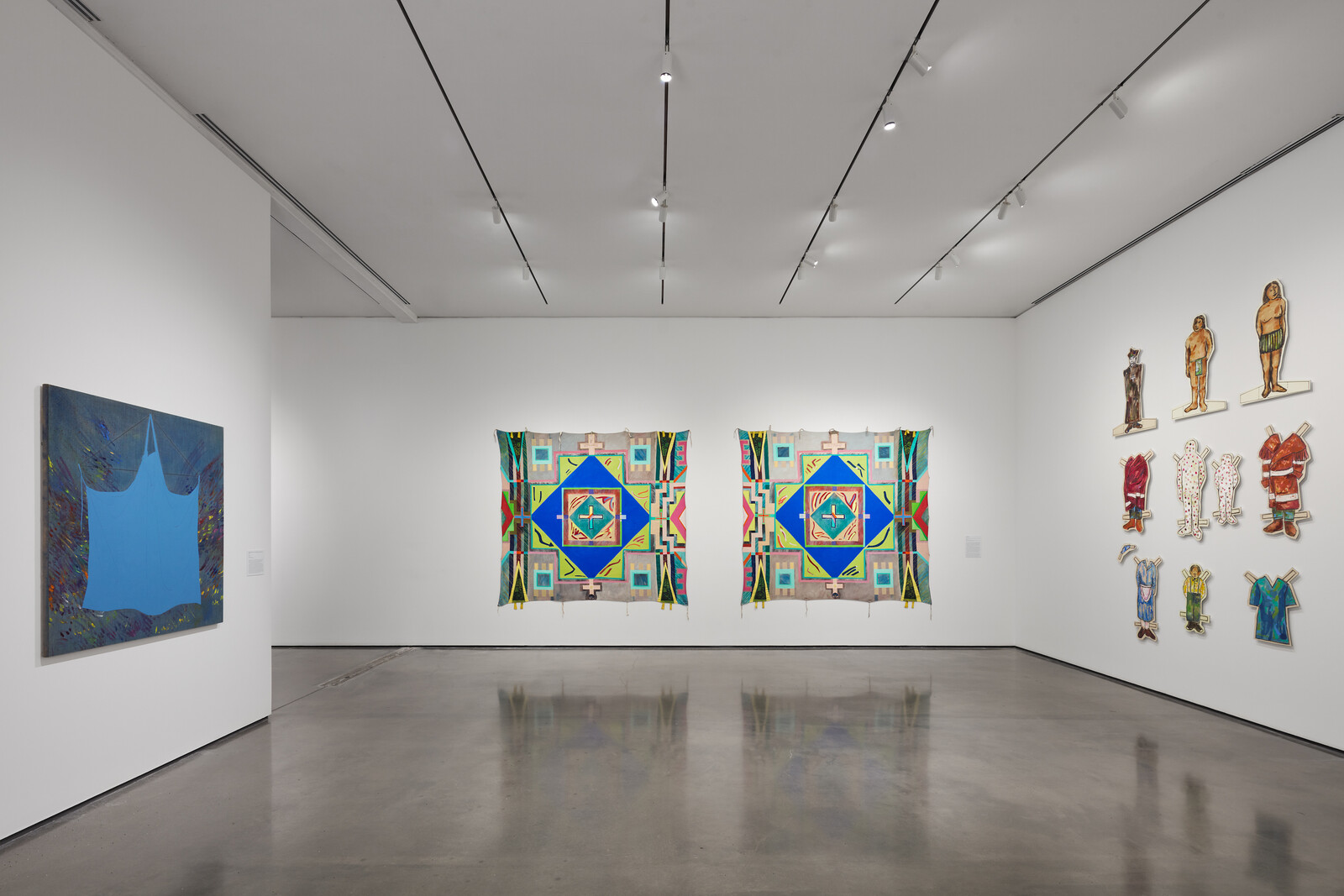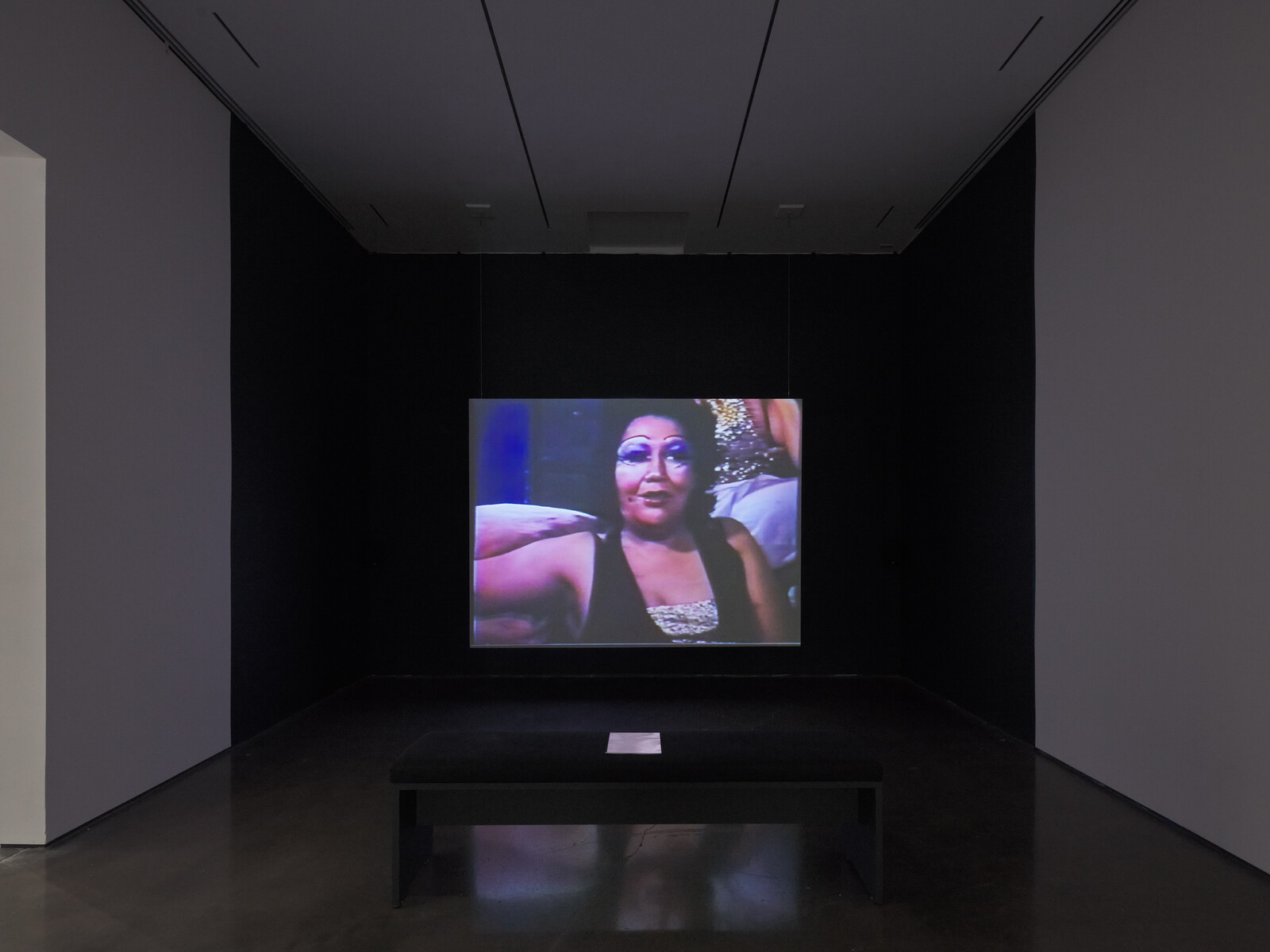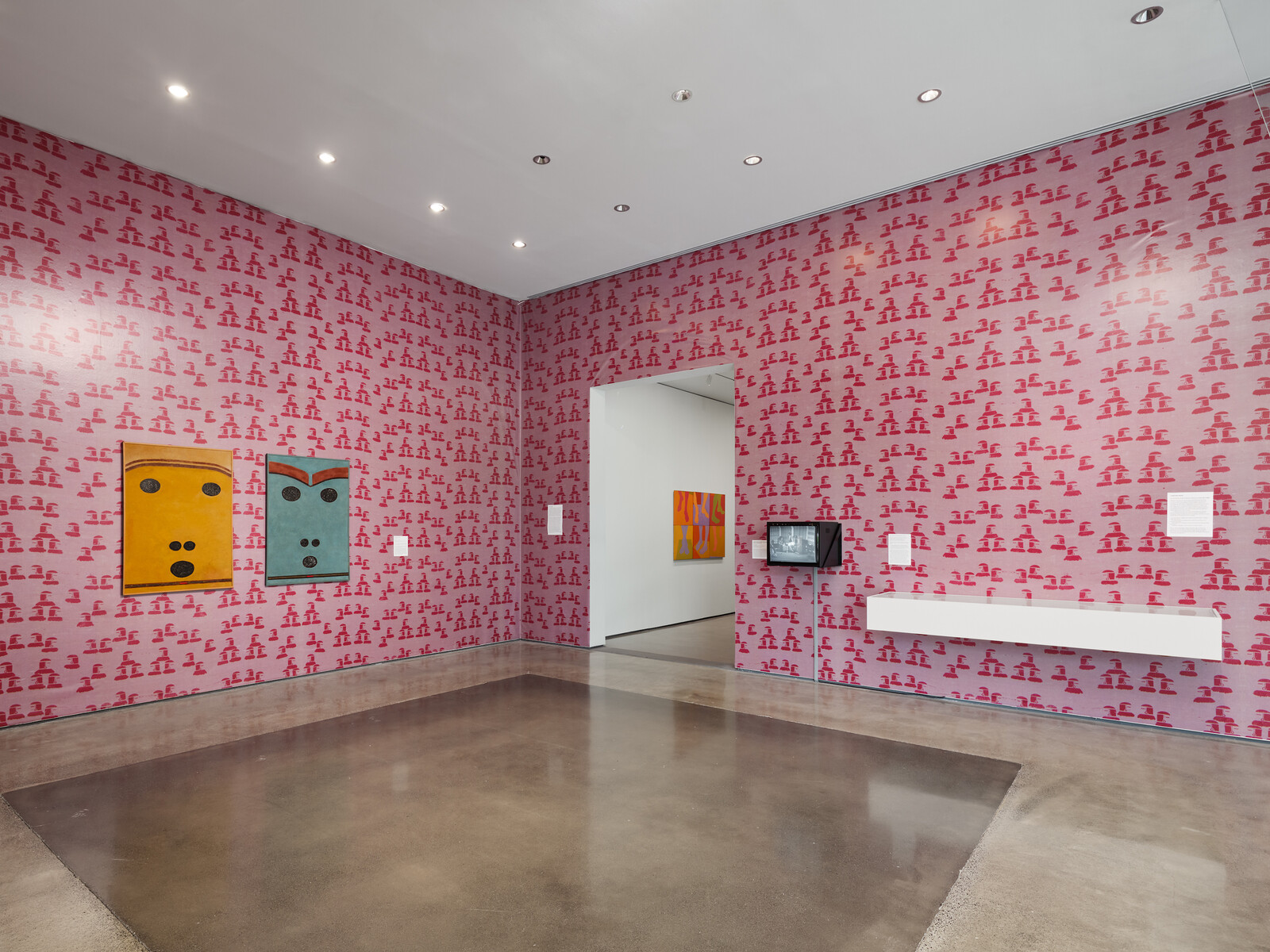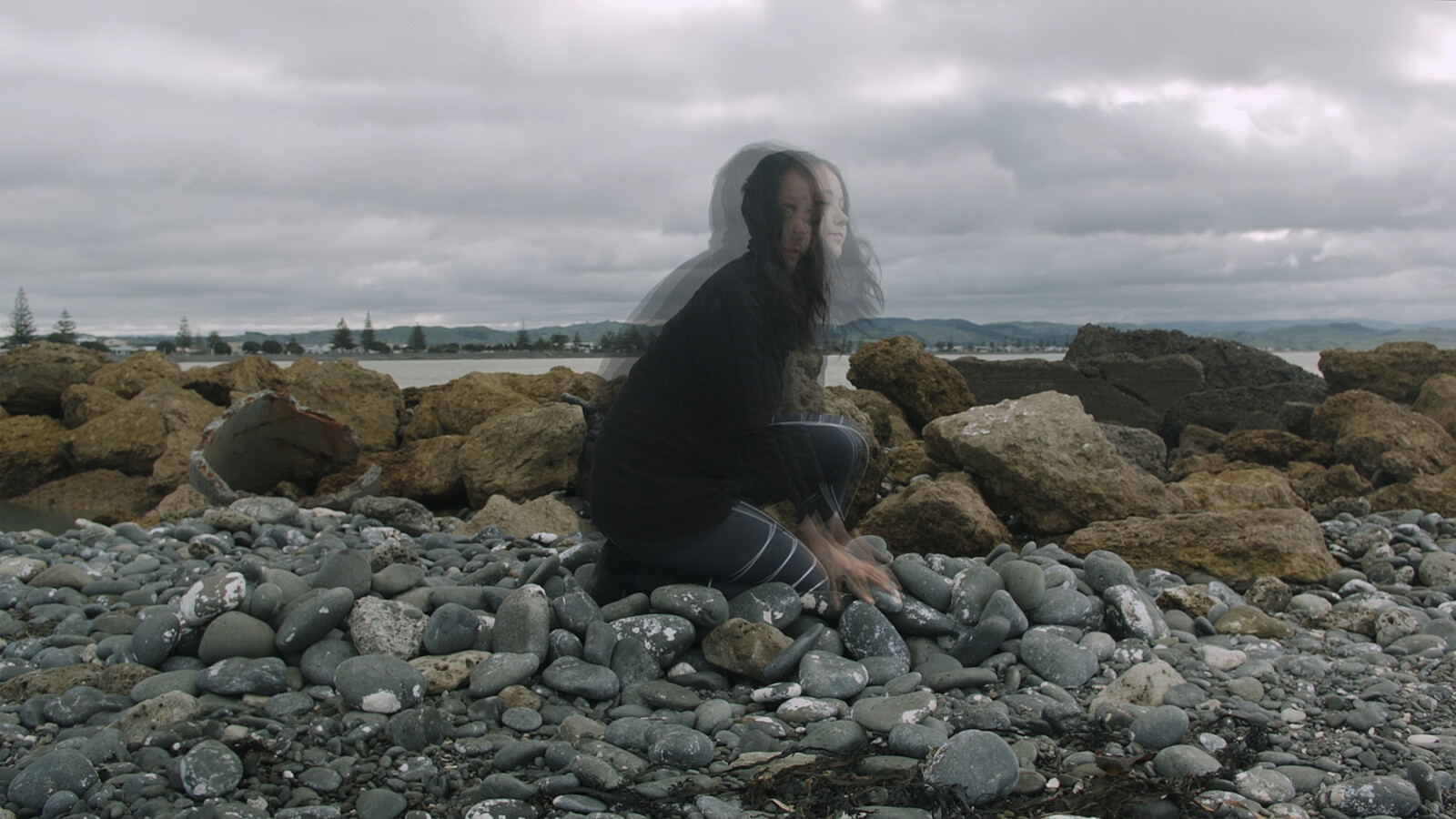In November 1969, a group of Native activists sailed across San Francisco Bay and occupied Alcatraz Island, home to the infamous prison that had closed in 1963. The occupation lasted until the summer of 1971, when federal authorities besieged the island by cutting off the electricity and water supply before government agents and local police removed the dozen or so remaining inhabitants. The year 1969 also saw the publication of the pamphlet “Indian Theatre: An Artistic Experiment in Process,” written collaboratively by Lloyd Kiva New (Cherokee), Rolland Meinholtz (Cherokee), and students at the Institute of American Indian Arts in Santa Fe, New Mexico. It called for the combination of contemporary theater practices with performative and ritual aspects of Native societies in an effort to bring marginalized Native stories and cultural forms to a reimagined stage.
The large survey exhibition “Indian Theater: Native Performance, Art, and Self-Determination since 1969,” curated by Candice Hopkins (Carcross / Tagish First Nation) at the Hessel Museum of Art, opens with archival documents in vitrines highlighting these two historical moments. Pages of “Indian Theatre: An Artistic Experiment in Process” are given pride of place at the entrance next to undated, grainy black-and-white videos of Native performances in dialogue with its ideas. The pamphlet’s spirit continues in another early gallery that projects videos of full-length performances by the New York City–based Spiderwoman Theater, founded in 1976 and currently the longest-running female Native performance troupe. Various printed materials pertaining to the group accompany the videos, which present adaptations of Aristophanes and cabaret.
For millennia, Native artistic expression has been sewn into the activities and objects of everyday life, and while societies and cultural practices constantly change, the emphasis throughout “Indian Theater” on performance would seem to be a way of activating the works on display and not have them exist as static artworks fastened to a wall, plinth, or floor. Nearly all of the exhibition’s painted and sculptural works feature objects that are always in close proximity to a body: shirts, shoes, gloves, condoms, masks, earrings, etc. Bob Boyer (Métis) painted geometric Native designs on blankets, while Dyani White Hawk’s (Sičangu Lakota) conjoined abstract panels are inspired by Lakota beadwork and quillwork.
Sometimes the Native body is on display, as in James Luna’s (Payómkawichum / Ipai / Mexican) video The Artifact Piece (1987), in which he rests motionless on his back in a display case wearing only a loincloth as museumgoers gawk. Dana Claxton (Lakota) takes the nearly opposite approach with four LED fireboxes (2018–19) that feature photographic portraits of individual figures with their faces and torsos covered by beaded objects, which the wall text notes are gifts and inheritances from friends and family. This is the subject as constituted by relation and literally embedded in social and cultural formations. In Claxton’s illuminated images, the sitters are hidden and effaced while simultaneously enhanced in being scaffolded and supported by the largesse bequeathed to them by the living and the dead.
This “right to opacity,” as Édouard Glissant terms it, takes a significant twist in “Indian Theater,” albeit perhaps unfortunately tucked away in the didactics. Labels for both Beau Dick’s (Kwakwaka’wakw, Musgamakw Dzawada’enuxw First Nation) mask Yagis (ca. 2005) and a display case of vinyl recordings of Native songs and music discuss work not meant for general consumption. In 2012, Dick took forty of his masks from his commercial gallery and ceremonially burned them; three LPs of field recordings made by ethnomusicologist Ida Halpern contain songs that were not intended to be heard by people outside of the community where they were performed, although other recordings of Native songs were made available for museumgoers to play on a turntable.
Emphasizing performance, as “Indian Theater” insistently does, is a way of keeping the works on display open-ended and in conceptual flux for audiences viewing the show. The exhibition also features an extensive set of Native performances throughout its duration. When Native activists took over Alcatraz Island, they read an at-times-sardonic proclamation addressed “To the Great White Father and All His People.” Documentary footage of its recitation appears in Sky Hopinka’s (Ho-Chunk Nation / Pechanga Band of Luiseño Indians) video Sunflower Siege Engine (2022) along with landscapes shot in what feels like a 1970s, blissed-out Super 8 mm film aesthetic. Self-determination as a performative mode need not be dour and severe, as Sunflower Siege Engine in particular and “Indian Theater” in general affirm.
